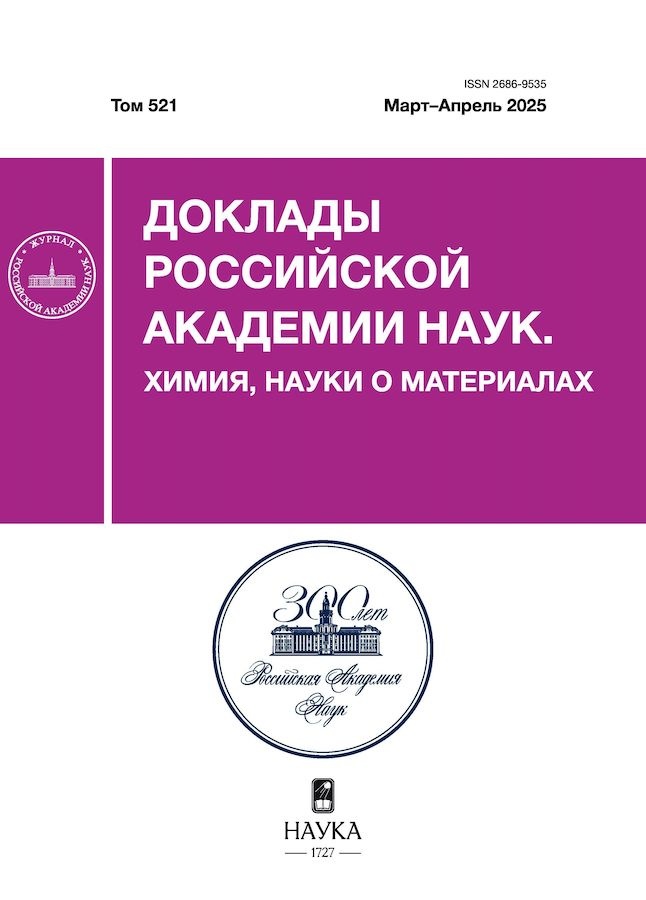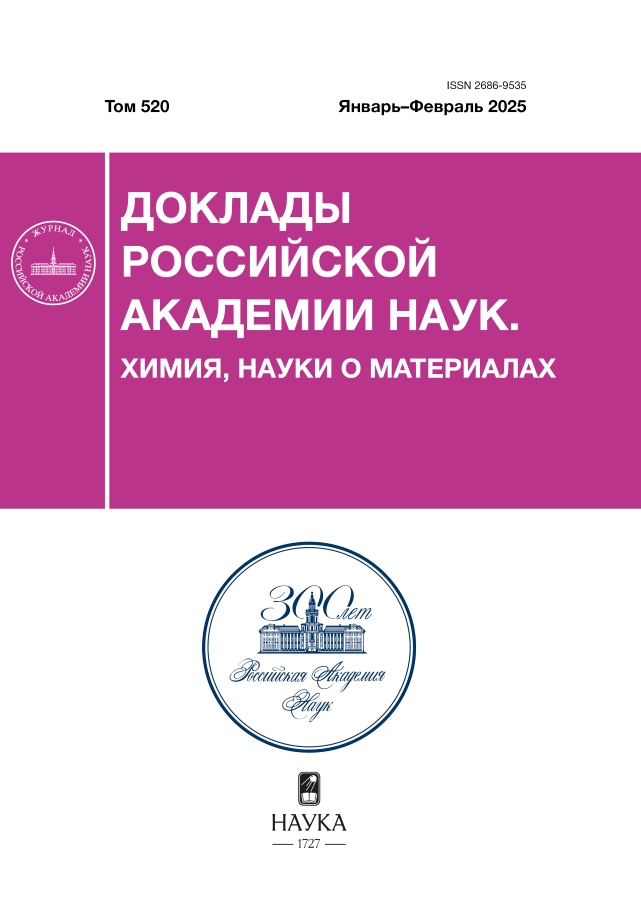Образование карвеола в ходе гидрирования карвона на Pd/Al2O3 в мягких условиях
- Авторы: Осадчая Т.Ю.1, Афинеевский А.В.1, Прозоров Д.А.1, Карденас-Лизана Ф.2
-
Учреждения:
- Ивановский государственный химико-технологический университет
- Университет Хериот-Уотта
- Выпуск: Том 520, № 1 (2025)
- Страницы: 12-22
- Раздел: ХИМИЯ
- URL: https://snv63.ru/2686-9535/article/view/683263
- DOI: https://doi.org/10.31857/S2686953525010026
- EDN: https://elibrary.ru/AWUTZT
- ID: 683263
Цитировать
Полный текст
Аннотация
Исследовано жидкофазное гидрирование карвона до карвеола с использованием катализатора Pd/Al2O3 в мягких условиях протекания реакции. Карвон, обладающий тремя различными функциональными группами, является сложным объектом для селективного гидрирования, эндо- и экзо- >С=С<-связи и карбонильная группа обладают различной реакционной способностью. Целью исследования являлось увеличение селективности по карвеолу – важному промышленному продукту пищевой, парфюмерной и фармацевтической отраслей. Установлены оптимальные условия гидрирования карвона до карвеола – растворитель толуол и температура 323 К. Показано, что селективность по карвеолу в мягких условиях достигает 20%. Результаты исследования демонстрируют потенциал применения катализатора Pd/Al2O3 для эффективного и селективного гидрирования карвона в промышленности. Настоящее исследование может стать основой для разработки новых технологий получения карвеола с высокими селективностью и выходом, что имеет важное значение для повышения эффективности и устойчивости химических процессов в различных отраслях промышленности.
Полный текст
Об авторах
Т. Ю. Осадчая
Ивановский государственный химико-технологический университет
Автор, ответственный за переписку.
Email: osadchayatyu@gmail.com
Россия, 153000 Иваново
А. В. Афинеевский
Ивановский государственный химико-технологический университет
Email: osadchayatyu@gmail.com
Россия, 153000 Иваново
Д. А. Прозоров
Ивановский государственный химико-технологический университет
Email: osadchayatyu@gmail.com
Россия, 153000 Иваново
Ф. Карденас-Лизана
Университет Хериот-Уотта
Email: osadchayatyu@gmail.com
Институт механики, технологических процессов и энергетики
Великобритания, Эдинбург, EH14 4ASСписок литературы
- Bhatia S.P., McGinty D., Letizia C.S., Api A.M. // Food Chem. Toxicol. 2008. V. 46. № 11. P. S85–S87. https://doi.org/10.1016/j.fct.2008.06.074
- Duetz W.A., Fjällman A.H., Ren S., Jourdat C., Witholt B. // Appl. Environ. Microbiol. 2001. V. 67. № 6. P. 2829–2832. https://doi.org/10.1128/AEM.67.6.2829-2832.2001
- Costa V.V., da Silva Rocha K.A., de Sousa L.F., Robles-Dutenhefner P.A., Gusevskaya E.V. // J. Mol. Cat. A: Chem. 2011. V. 345. Р. 69–74. https://doi.org/10.1016/j.molcata.2011.05.020
- de Miguel S.R, Román-Mart´ınez M.C., Cazorla-Amorós D., Jablonski E.L., Scelza O.A. // Cat. Today. 2001. V. 66. № 2–4. P. 289–295. https://doi.org/10.1016/S0920-5861(00)00657-X
- Chapman H.A., Herbal K., Motherwell W.B. // Synlett. 2010. V. 4. № 3. P. 595–598. https://doi.org/10.1055/s-0029-1219373
- Stekrova M., Kumar N., Mäki-Arvela P., Ardashov O.V., Volcho K.P., Salakhutdinov N.F., Murzin D.Yu. // Materials. 2013. V. 6. № 5. P. 2103–2118. https://doi.org/10.3390/ma6052103
- Anikeev V.I., Sivcev V.P., Il'ina I.V., Korchagina D.V., Statsenko O.B., Volcho K.P., Salakhutdinov N.F. // Russ. J. Phys. Chem. A. 2013. V. 87. № 3. P. 382–387. https://doi.org/10.7868/S0044453713030023
- Black P.J. Catalytic electronic activation: The addition of nucleophiles to an allylic alcohol. Doctoral thesis, United Kingdom, University of Bath, 2002. 192 p.
- Bicas J.L., Dionísio A.P., Pastore G.M. // Chem. Rev. 2009. V. 109. № 9. P. 4518–4531. https://doi.org/10.1021/cr800190y
- Fahlbusch K.-G., Hammerschmidt F.-J., Panten J., Pickenhagen W., Schatkowski D., Bauer K., Garbe D., Surburg H. Flavors and fragrances. In: Ullmann's encyclopedia of industrial chemistry. V. 15. Elvers B., Hawkins S., Russey W. (eds.). Weinheim, Wiley-VCH Verlag GmbH & Co. KGaA, 2003. P. 73–198. https://doi.org/10.1002/14356007.a11_141
- Demidova Y.S., Suslov E.V., Simakova O.A., Volcho K.P., Salakhutdinov N.F., Simakova I.L., Murzin D.Y. // J. Mol. Catal. A: Chem. 2016. V. 420. P. 142–148. https://doi.org/10.1016/j.molcata.2016.04.013
- Schmidt E., Wanner J. Adulteration of essential oils. In: Handbook of essential oils: Science, technology and application. 3rd Edn. Can Baser K.H., Buchbauer G. (eds.). USA, Boca Raton, CRC Press, 2020. P. 543–580.
- Melo C.I., Bogel-Łukasik R., Bogel-Łukasik E. // J. Supercrit. Fluids. 2012. V. 61. P. 191–198. https://doi.org/10.1016/j.supflu.2011.10.005
- Montero G.E.R., Stassi J.P., de Miguel S.R., Zgolicz P.D. // React. Chem. Eng. 2023. V. 8. № 12. Р. 3133–3149. https://doi.org/
- Samarov A.A., Vostrikov S.V., Glotov A.P., Verevkin S.P. // Chemistry. 2024. V. 6. № 4. P. 706–722. https://doi.org/10.3390/chemistry6040042
- Heterogenized homogeneous catalysts for fine chemicals production: materials and processes. V. 33. Barbaro P., Liguori F. (eds.). USA: Boston, Springer, 2010. 470 p. https://doi.org/10.1007/978-90-481-3696-4
- Benavente P., Cárdenas-Lizana F., Keane M.A. // Cat. Comm. 2017. V. 96. P. 37–40. https://doi.org/10.1016/j.catcom.2017.03.026
- Malkar R.S., Yadav G.D. // Curr. Catal. 2020. V. 9. № 1. P. 32–58. https://doi.org/10.2174/2211544708666190613163523
- Vilella I.M.J., de Miguel S.R., Scelza O.A. // J. Mol. Cat. A: Chem. 2008. V. 284. № 1–2. P. 161–171. https://doi.org/10.1016/j.molcata.2008.01.017
- Gilbert L., Mercier C. Solvent effects in heterogeneous catalysis: Application to the synthesis of fine chemicals. In: Studies in surface science and catalysis. V. 78. Guisnet M. (ed.). Amsterdam, Elsevier, 1993. Р. 51. https://doi.org/10.1016/S0167-2991(08)63303-0
- Wehrli J.T., Baiker A., Monti D.M., Blaser H.U., Jalett H.P. // J. Mol. Cat. 1989. V. 57. № 2. P. 245–257. https://doi.org/10.1016/0304-5102(89)80234-2
- Augustine R.L. Advances in catalysis. V. 25. Eley D.D., Selwood P.W., Weisz P.B. (eds.). New York, Academic Press, 1976. P. 56.
- Blaser H.U., Jalett H.P., Wiehl J. // J. Mol. Catal. 1991. V. 68. № 2. P. 215–222. https://doi.org/10.1016/0304-5102(91)80076-F
- Bertero N.M., Trasarti A.F., Apesteguía C.R., Marchi A. // J. App. Catal. A: Gen. 2011. V. 394. № 1–2. P. 228–238. https://doi.org/10.1016/j.apcata.2011.01.003
- Li M., Wang X., Cárdenas-Lizana F., Keane M.A. // Catal. Today. 2017. V. 279. № 1. P. 19–28. https://doi.org/10.1016/j.cattod.2016.06.030
- Cárdenas-Lizana F., Lamey D., Gómez-Quero S., Perret N., Kiwi-Minsker L., Keane M.A. // Catal. Today. 2011. V. 173. № l. P. 53–61. https://doi.org/10.1016/j.cattod.2011.03.084
- Cárdenas-Lizana F., Hao Y., Crespo-Quesada M., Yuranov I., Wang X., Keane M.A., Kiwi-Minsker L. // ACS Catal. 2013. V. 3. № 6. P. 1386–1396. https://doi.org/10.1021/cs400194
- Petrier C., Luche J.-L. // Tetrahedron lett. 1987. V. 28. № 21. P. 2351–2352. https://doi.org/10.1016/S0040-4039(00)96120-3
- Li M., Hao Y., Cárdenas-Lizana F., Yiu H.H.P., Keane M.A. // Top. Catal. 2015. V. 58. P. 149–158. https://doi.org/10.1007/s11244-014-0354-9
- Molnar A., Sarkany A., Varga M. // J. Mol. Catal. A: Chem. 2001. V. 173. № 1. P. 185–221. https://doi.org/10.1016/S1381-1169(01)00150-9
- Shorthouse L.J., Roberts A.J., Raval R. // Surf. Sci. 2001. V. 480. № 1–2. P. 37–46. https://doi.org/10.1016/S0039-6028(01)00991-8
- Brunner E. // J. Chem. Eng. Data. 1985. V. 30. № 3. P. 269–273. https://doi.org/10.1021/je00041a010
- Saboktakin M.R., Tabatabaie R.M., Maharramov A., Ramazanov M.A. // Synth. Comm. 2011. V. 41. № 10. P. 1455–1463. https://doi.org/10.1080/00397911.2010.486510
Дополнительные файлы




















